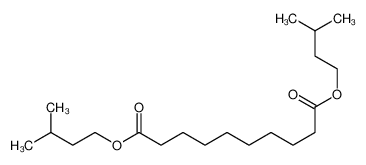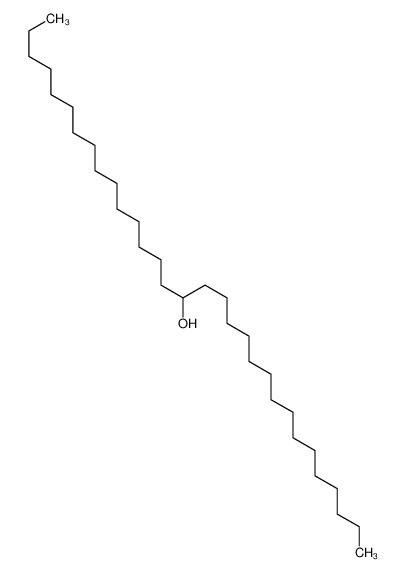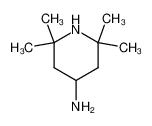1.Identification
1.1 GHS Product identifier
| Product name | isoamylol |
|---|
1.2 Other means of identification
| Product number | - |
|---|---|
| Other names | 3-Methyl-1-butanol |
1.3 Recommended use of the chemical and restrictions on use
| Identified uses | For industry use only. Food additives -> Flavoring Agents |
|---|---|
| Uses advised against | no data available |
1.4 Supplier's details
| Company | MOLBASE (Shanghai) Biotechnology Co., Ltd. |
|---|---|
| Address | Floor 4 & 5, Building 12, No. 1001 North Qinzhou Road, Xuhui District, Shanghai, China |
| Telephone | +86(21)64956998 |
| Fax | +86(21)54365166 |
1.5 Emergency phone number
| Emergency phone number | +86-400-6021-666 |
|---|---|
| Service hours | Monday to Friday, 9am-5pm (Standard time zone: UTC/GMT +8 hours). |
2.Hazard identification
2.1 Classification of the substance or mixture
Flammable liquids, Category 3
Skin irritation, Category 2
Serious eye damage, Category 1
Acute toxicity - Inhalation, Category 4
Specific target organ toxicity – single exposure, Category 3
2.2 GHS label elements, including precautionary statements
| Pictogram(s) |   |
|---|---|
| Signal word | Warning |
| Hazard statement(s) | H226 Flammable liquid and vapour H315 Causes skin irritation H318 Causes serious eye damage H332 Harmful if inhaled H335 May cause respiratory irritation |
| Precautionary statement(s) | |
| Prevention | P210 Keep away from heat, hot surfaces, sparks, open flames and other ignition sources. No smoking. P233 Keep container tightly closed. P240 Ground and bond container and receiving equipment. P241 Use explosion-proof [electrical/ventilating/lighting/...] equipment. P242 Use non-sparking tools. P243 Take action to prevent static discharges. P280 Wear protective gloves/protective clothing/eye protection/face protection. P264 Wash ... thoroughly after handling. P261 Avoid breathing dust/fume/gas/mist/vapours/spray. P271 Use only outdoors or in a well-ventilated area. |
| Response | P303+P361+P353 IF ON SKIN (or hair): Take off immediately all contaminated clothing. Rinse skin with water [or shower]. P370+P378 In case of fire: Use ... to extinguish. P302+P352 IF ON SKIN: Wash with plenty of water/... P321 Specific treatment (see ... on this label). P332+P313 If skin irritation occurs: Get medical advice/attention. P362+P364 Take off contaminated clothing and wash it before reuse. P305+P351+P338 IF IN EYES: Rinse cautiously with water for several minutes. Remove contact lenses, if present and easy to do. Continue rinsing. P310 Immediately call a POISON CENTER/doctor/… P304+P340 IF INHALED: Remove person to fresh air and keep comfortable for breathing. P312 Call a POISON CENTER/doctor/…if you feel unwell. |
| Storage | P403+P235 Store in a well-ventilated place. Keep cool. P403+P233 Store in a well-ventilated place. Keep container tightly closed. P405 Store locked up. |
| Disposal | P501 Dispose of contents/container to ... |
2.3 Other hazards which do not result in classification
none
3.Composition/information on ingredients
3.1 Substances
| Chemical name | Common names and synonyms | CAS number | EC number | Concentration |
|---|---|---|---|---|
| isoamylol | isoamylol | 123-51-3 | none | 100% |
4.First-aid measures
4.1 Description of necessary first-aid measures
General advice
Consult a physician. Show this safety data sheet to the doctor in attendance.
If inhaled
Fresh air, rest. Refer for medical attention.
In case of skin contact
Remove contaminated clothes. Rinse skin with plenty of water or shower.
In case of eye contact
First rinse with plenty of water for several minutes (remove contact lenses if easily possible), then refer for medical attention.
If swallowed
Rinse mouth. Give nothing to drink. Do NOT induce vomiting. Refer immediately for medical attention.
4.2 Most important symptoms/effects, acute and delayed
Very high vapor concentrations irritate eyes and upper respiratory tract. Continued contact with skin may cause irritation. (USCG, 1999)
4.3 Indication of immediate medical attention and special treatment needed, if necessary
Minimum/Potential Fatal Human Dose
NEAR BORDERLINE BETWEEN TOXICITY CLASSES 3 & 4. 4=VERY TOXIC: PROBABLE ORAL LETHAL DOSE (HUMAN) 50-500 MG/KG, BETWEEN 1 TEASPOON & 1 OZ FOR 70 KG PERSON (150 LB). 3= MODERATELY TOXIC: PROBABLE ORAL LETHAL DOSE (HUMAN) 0.5-5.0 G/KG, BETWEEN 1 OZ & 1 PINT (OR 1 LB) ... .
Absorption, Distribution and Excretion
3-Methyl-1-butanol, following serial (four 15-minute intervals) ip injections in the rat, is very rapidly metabolized ... . Only 1-1.5% of the administered doses of 3-methyl-1-butanol were excreted in the expired air plus urine as the pentanol. The blood concentration of 3-methyl-1-butanol decreased from 37 mg/100 ml at 1 hr (ie, 15 min after the last pentanol injection) to <1 mg/100 ml at 5 hr. In the rabbit, limited amounts of 3-methyl-1-butanol and the other primary pentanols are conjugated to yield the glucuronide, and 7-10% of the administered dose is excreted as the urinary glucuronide.
5.Fire-fighting measures
5.1 Extinguishing media
Suitable extinguishing media
Use water, powder, "alcohol" foam or carbon tetrachloride. Water spray is effective for cooling fire-exposed containers, dispersing spills before burning, and protection from heat those persons engaged to stop leakage during the fire.
5.2 Specific hazards arising from the chemical
Excerpt from ERG Guide 129 [Flammable Liquids (Water-Miscible / Noxious)]: HIGHLY FLAMMABLE: Will be easily ignited by heat, sparks or flames. Vapors may form explosive mixtures with air. Vapors may travel to source of ignition and flash back. Most vapors are heavier than air. They will spread along ground and collect in low or confined areas (sewers, basements, tanks). Vapor explosion hazard indoors, outdoors or in sewers. Those substances designated with a (P) may polymerize explosively when heated or involved in a fire. Runoff to sewer may create fire or explosion hazard. Containers may explode when heated. Many liquids are lighter than water. (ERG, 2016)
5.3 Special protective actions for fire-fighters
Wear self-contained breathing apparatus for firefighting if necessary.
6.Accidental release measures
6.1 Personal precautions, protective equipment and emergency procedures
Use personal protective equipment. Avoid dust formation. Avoid breathing vapours, mist or gas. Ensure adequate ventilation. Evacuate personnel to safe areas. Avoid breathing dust. For personal protection see section 8.
6.2 Environmental precautions
Personal protection: protective clothing, safety goggles and filter respirator for organic gases and vapours adapted to the airborne concentration of the substance. Collect leaking and spilled liquid in sealable non-plastic containers as far as possible. Absorb liquid in sand or inert absorbent. Wash away remainder with plenty of water.
6.3 Methods and materials for containment and cleaning up
1. Remove all ignition sources. 2. Ventilate area of spill or leak. 3. For small quantities, absorb on paper towels. Evaporate in a safe place (such as a fume hood). Allow sufficient time for evaporating vapors to completely clear the hood ductwork. Burn the paper in a suitable location away from combustible materials. ... Isoamyl alcohol should not be allowed to enter a confined space, such as a sewer, because of the possibility of an explosion.
7.Handling and storage
7.1 Precautions for safe handling
Avoid contact with skin and eyes. Avoid formation of dust and aerosols. Avoid exposure - obtain special instructions before use.Provide appropriate exhaust ventilation at places where dust is formed. For precautions see section 2.2.
7.2 Conditions for safe storage, including any incompatibilities
Fireproof. Separated from strong oxidants and reducing agents.IN GENERAL, MATERIALS WHICH ARE TOXIC AS STORED OR WHICH CAN DECOMP INTO TOXIC COMPONENTS ... SHOULD BE STORED IN A COOL, WELL-VENTILATED PLACE, OUT OF DIRECT RAYS OF THE SUN, AWAY FROM AREAS OF HIGH FIRE HAZARD, & SHOULD BE PERIODICALLY INSPECTED ... INCOMPATIBLE MATERIALS SHOULD BE ISOLATED FROM EACH OTHER.
8.Exposure controls/personal protection
8.1 Control parameters
Occupational Exposure limit values
Recommended Exposure Limit: 10 Hr Time-Weighted Avg: 100 ppm (360 mg/cu m).
Recommended Exposure Limit: 15 Min Short-Term Exposure Limit: 125 ppm (450 mg/cu m).
Biological limit values
no data available
8.2 Appropriate engineering controls
Handle in accordance with good industrial hygiene and safety practice. Wash hands before breaks and at the end of workday.
8.3 Individual protection measures, such as personal protective equipment (PPE)
Eye/face protection
Safety glasses with side-shields conforming to EN166. Use equipment for eye protection tested and approved under appropriate government standards such as NIOSH (US) or EN 166(EU).
Skin protection
Wear impervious clothing. The type of protective equipment must be selected according to the concentration and amount of the dangerous substance at the specific workplace. Handle with gloves. Gloves must be inspected prior to use. Use proper glove removal technique(without touching glove's outer surface) to avoid skin contact with this product. Dispose of contaminated gloves after use in accordance with applicable laws and good laboratory practices. Wash and dry hands. The selected protective gloves have to satisfy the specifications of EU Directive 89/686/EEC and the standard EN 374 derived from it.
Respiratory protection
Wear dust mask when handling large quantities.
Thermal hazards
no data available
9.Physical and chemical properties
| Physical state | colourless liquid |
|---|---|
| Colour | OILY, CLEAR LIQ |
| Odour | CHARACTERISTIC, DISAGREEABLE ODOR |
| Melting point/ freezing point | 49°C(lit.) |
| Boiling point or initial boiling point and boiling range | 130°C(lit.) |
| Flammability | Class II Combustible Liquid: Fl.P. at or above 37.78°C and below 60°C.Flammable. |
| Lower and upper explosion limit / flammability limit | Lower flammable limit: 1.2% by volume; Upper flammable limit: 9.0% (at 212 deg F) by volume |
| Flash point | 43°C |
| Auto-ignition temperature | 340°C |
| Decomposition temperature | no data available |
| pH | no data available |
| Kinematic viscosity | 3.738 cP @ 25°C |
| Solubility | In water:25 g/L (20 ºC) |
| Partition coefficient n-octanol/water (log value) | log Kow= 1.16 |
| Vapour pressure | 2 mm Hg ( 20 °C) |
| Density and/or relative density | 0.809g/mLat 25°C(lit.) |
| Relative vapour density | 3 (vs air) |
| Particle characteristics | no data available |
10.Stability and reactivity
10.1 Reactivity
no data available
10.2 Chemical stability
Stable under recommended storage conditions.
10.3 Possibility of hazardous reactions
MODERATE, WHEN EXPOSED TO HEAT OR FLAME; CAN REACT VIGOROUSLY WITH REDUCING MATERIALS.ISOAMYL ALCOHOL attacks plastics [Handling Chemicals Safely, 1980. p. 236]. Mixtures with concentrated sulfuric acid and strong hydrogen peroxide may cause explosions. Mixing with hypochlorous acid in water or water/carbon tetrachloride solution can generate isoamyl hypochlorites, which may explode, particularly on exposure to sunlight or heat. Mixing with chlorine would also yield isoamyl hypochlorites [NFPA 491 M, 1991]. Base-catalysed reactions with isocyanates can occur with explosive violence [Wischmeyer,1969].
10.4 Conditions to avoid
no data available
10.5 Incompatible materials
Strong oxidizers.
10.6 Hazardous decomposition products
When heated to decomposition it emits acrid smoke and fumes.
11.Toxicological information
Acute toxicity
- Oral: LD50 Rat oral 1,300 mg/kg
- Inhalation: no data available
- Dermal: no data available
Skin corrosion/irritation
no data available
Serious eye damage/irritation
no data available
Respiratory or skin sensitization
no data available
Germ cell mutagenicity
no data available
Carcinogenicity
no data available
Reproductive toxicity
no data available
STOT-single exposure
no data available
STOT-repeated exposure
no data available
Aspiration hazard
no data available
12.Ecological information
12.1 Toxicity
- Toxicity to fish: no data available
- Toxicity to daphnia and other aquatic invertebrates: no data available
- Toxicity to algae: no data available
- Toxicity to microorganisms: no data available
12.2 Persistence and degradability
Isopentanol is readily biodegraded in aerobic screening tests using sewage or activated sludge inocula(1-5). In one screening study utilizing a sewage seed, 75% and 100% of the isopentanol degraded within 4.5 and 6 days, respectively(1). In another, the half-life of isopentanol was 2.4 days(2). Five day BOD values ranged from 49% to 77% of theoretical(3-5). In a semi-continuous activated sludge treatment plant simulation, a 47% BOD reduction was achieved in 8 hr(3). The half-lives of isopentanol in ground water, Lester River, MN river water and Lake Superior harbor water were 15, 11, and 6.1 days, respectively(6). Isopentanol was >75% mineralized when incubated for 8 weeks in an anaerobic reactor using a 10% sludge inoculum from a secondary digester(7). The mean removal rate of isopentanol from a semi-pilot scale anaerobic lagoon was 32% in 20 days(8).
12.3 Bioaccumulative potential
The BCF for isopentanol estimated from isopentanol's octanol/water partition coefficient, log 1.42(1), using a recommended regression equation is 7(2). Such a low BCF would indicate that isopentanol would not bioconcentrate in aquatic organisms(SRC).
12.4 Mobility in soil
The Koc for isopentanol estimated from its water solubility, 26.7 mg/L(1), using recommended regression equations are 720(2) and 679(4). However, the chemicals used in developing these equations were mainly pesticides and their structures are not similar to isopentanol. The Koc for isopentanol estimated from molecular structure is 4(3). This should be a reasonable estimate for the Koc because it is close to the experimental value for the structurally similar chemical, 1-pentanol, 1.6(6). According to a suggested classification scheme(5), the estimated Kocs based on molecular structure suggests that isopentanol is very highly mobile in soil(SRC).
12.5 Other adverse effects
no data available
13.Disposal considerations
13.1 Disposal methods
Product
The material can be disposed of by removal to a licensed chemical destruction plant or by controlled incineration with flue gas scrubbing. Do not contaminate water, foodstuffs, feed or seed by storage or disposal. Do not discharge to sewer systems.
Contaminated packaging
Containers can be triply rinsed (or equivalent) and offered for recycling or reconditioning. Alternatively, the packaging can be punctured to make it unusable for other purposes and then be disposed of in a sanitary landfill. Controlled incineration with flue gas scrubbing is possible for combustible packaging materials.
14.Transport information
14.1 UN Number
| ADR/RID: UN1105 | IMDG: UN1105 | IATA: UN1105 |
14.2 UN Proper Shipping Name
| ADR/RID: PENTANOLS |
| IMDG: PENTANOLS |
| IATA: PENTANOLS |
14.3 Transport hazard class(es)
| ADR/RID: 3 | IMDG: 3 | IATA: 3 |
14.4 Packing group, if applicable
| ADR/RID: III | IMDG: III | IATA: III |
14.5 Environmental hazards
| ADR/RID: no | IMDG: no | IATA: no |
14.6 Special precautions for user
no data available
14.7 Transport in bulk according to Annex II of MARPOL 73/78 and the IBC Code
no data available
15.Regulatory information
15.1 Safety, health and environmental regulations specific for the product in question
| Chemical name | Common names and synonyms | CAS number | EC number |
|---|---|---|---|
| isoamylol | isoamylol | 123-51-3 | none |
| European Inventory of Existing Commercial Chemical Substances (EINECS) | Listed. | ||
| EC Inventory | Listed. | ||
| United States Toxic Substances Control Act (TSCA) Inventory | Listed. | ||
| China Catalog of Hazardous chemicals 2015 | Listed. | ||
| New Zealand Inventory of Chemicals (NZIoC) | Listed. | ||
| Philippines Inventory of Chemicals and Chemical Substances (PICCS) | Listed. | ||
| Vietnam National Chemical Inventory | Listed. | ||
| Chinese Chemical Inventory of Existing Chemical Substances (China IECSC) | Listed. | ||
16.Other information
Information on revision
| Creation Date | Aug 10, 2017 |
|---|---|
| Revision Date | Aug 10, 2017 |
Abbreviations and acronyms
- CAS: Chemical Abstracts Service
- ADR: European Agreement concerning the International Carriage of Dangerous Goods by Road
- RID: Regulation concerning the International Carriage of Dangerous Goods by Rail
- IMDG: International Maritime Dangerous Goods
- IATA: International Air Transportation Association
- TWA: Time Weighted Average
- STEL: Short term exposure limit
- LC50: Lethal Concentration 50%
- LD50: Lethal Dose 50%
- EC50: Effective Concentration 50%
References
- IPCS - The International Chemical Safety Cards (ICSC), website: http://www.ilo.org/dyn/icsc/showcard.home
- HSDB - Hazardous Substances Data Bank, website: https://toxnet.nlm.nih.gov/newtoxnet/hsdb.htm
- IARC - International Agency for Research on Cancer, website: http://www.iarc.fr/
- eChemPortal - The Global Portal to Information on Chemical Substances by OECD, website: http://www.echemportal.org/echemportal/index?pageID=0&request_locale=en
- CAMEO Chemicals, website: http://cameochemicals.noaa.gov/search/simple
- ChemIDplus, website: http://chem.sis.nlm.nih.gov/chemidplus/chemidlite.jsp
- ERG - Emergency Response Guidebook by U.S. Department of Transportation, website: http://www.phmsa.dot.gov/hazmat/library/erg
- Germany GESTIS-database on hazard substance, website: http://www.dguv.de/ifa/gestis/gestis-stoffdatenbank/index-2.jsp
- ECHA - European Chemicals Agency, website: https://echa.europa.eu/




















